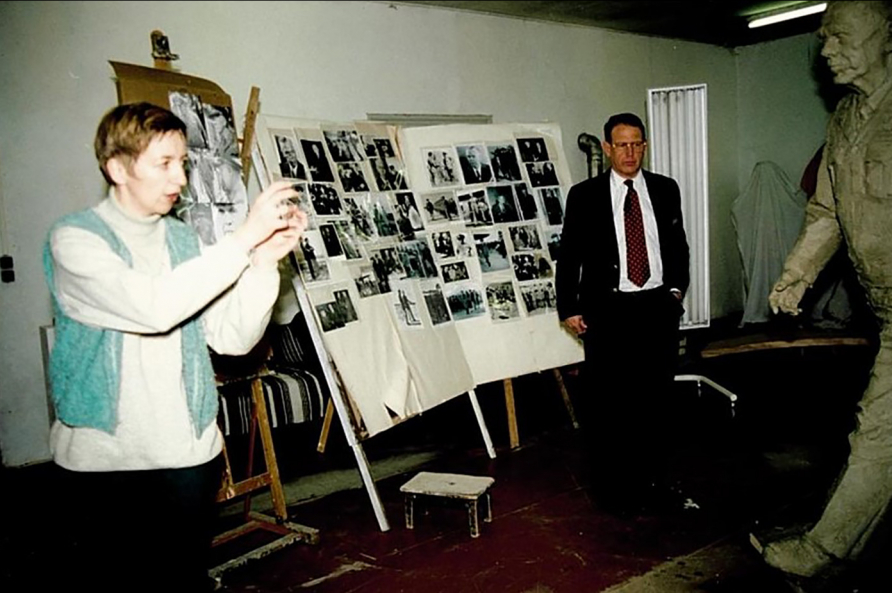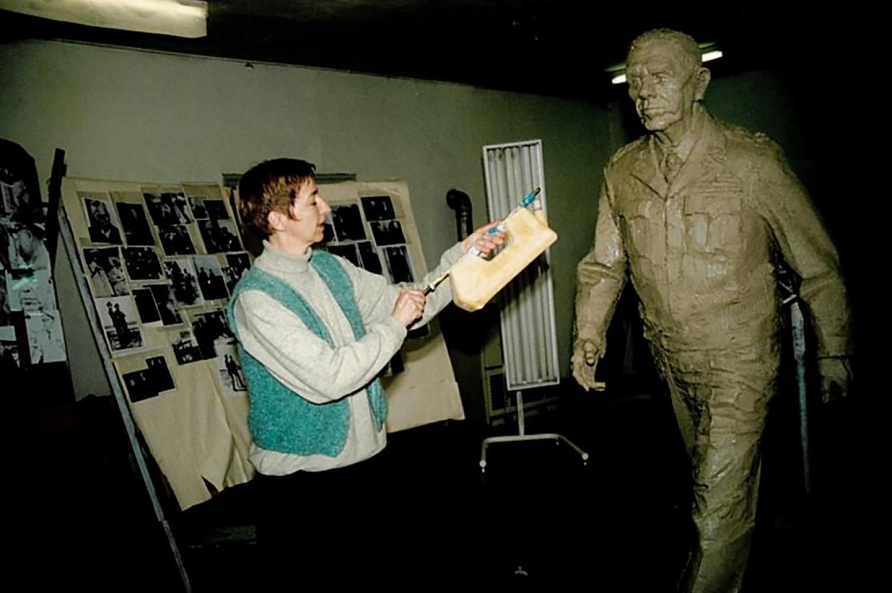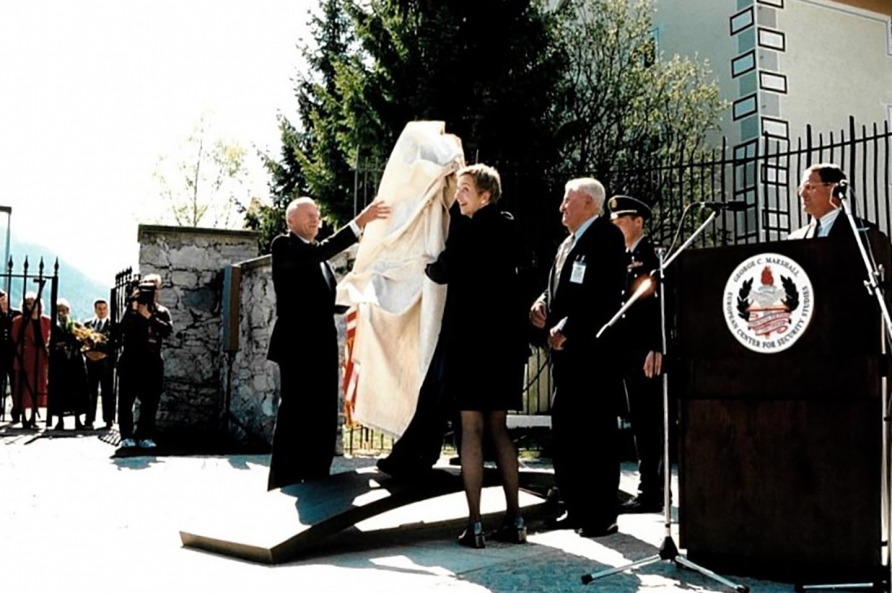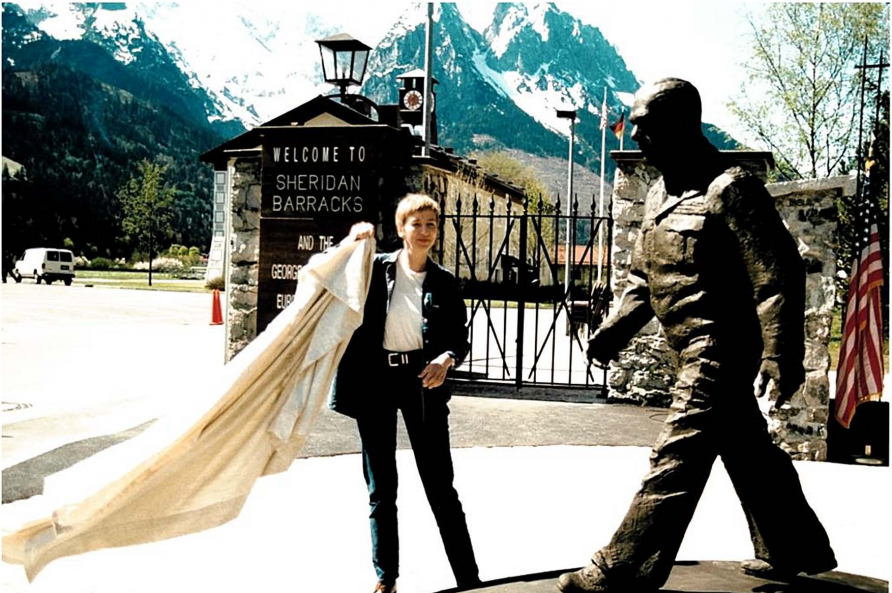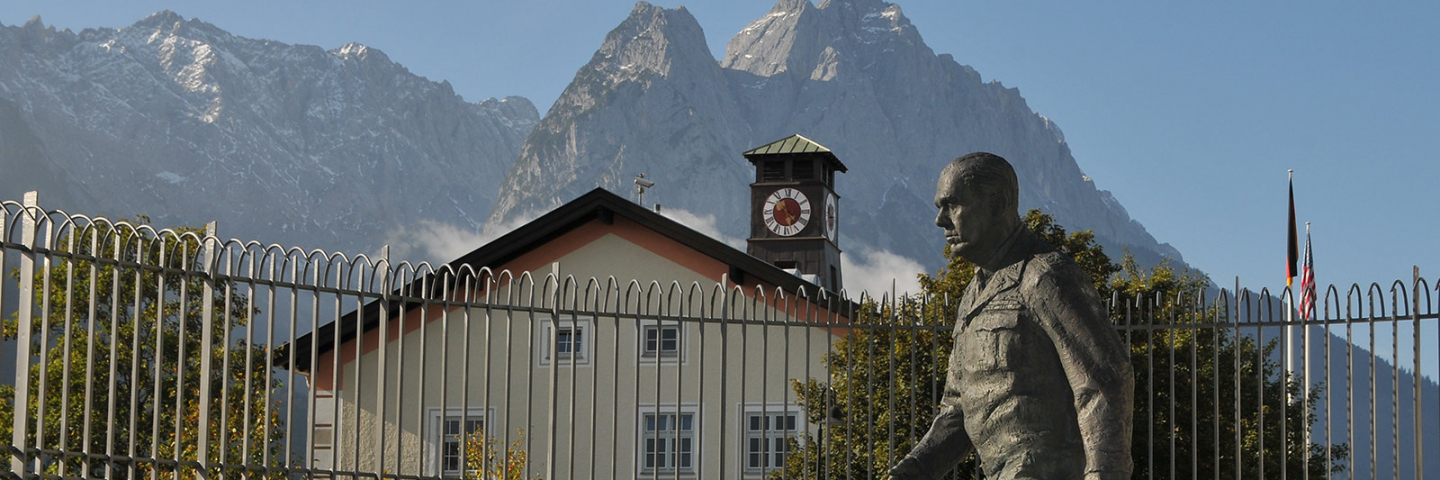
Marshall Center’s Bronze Statue of its Namesake Turns 22
By Christine June
Public Affairs Office
George C. Marshall European Center for Security Studies
GARMISCH-PARTENKIRCHEN, Germany (April 30, 2020) – When Anna Gussarova, from the Republic of Kazakhstan, first came to the George C. Marshall European Center for Security Studies in 2013, she didn’t immediately notice the bronze sculpture of its namesake - Soldier and Statesman George C. Marshall.
She notices something new and inspirational about the statue every time she returns to the Marshall Center.
From her first Marshall Center experience as a participant in 2013, she has been back for the Alumni Scholar Program, and several times as an adjunct professor for the Program on Terrorism and Security Studies, and Program on Cyber Security Studies.
“It’s not in the center of the Marshall Center complex that's why I missed it the first time, but I have seen it and admired it many times now,” explained Gussarova.
New Friends, Allies
The statue, which shows the late General of the Army George C. Marshall walking east to greet new friends and allies, turns 22 years old April 30.
The World War II general masterminded the European Recovery Program or Marshall Plan that helped Europe recover economically after the war.
The Marshall Center is one of *five U.S. Department of Defense Regional Centers, and the only bilateral Center—a partnership between the U.S. Department of Defense and the German Federal Ministry of Defense. It is also the only regional center for the Federal Republic of Germany.
The Marshall Center will also have a birthday this year. It will turn 27 years old June 5, which is also the date in 1947 of the speech at Harvard University where then Secretary of State Marshall outlined the American proposal. The European Recovery Program, as it was formally known, became branded as the Marshall Plan.
He received the Nobel Prize for Peace in 1953 due to his vision and efforts with the Marshall Plan that rebuilt Europe after WWII. He is the only career officer in the U.S. Army to ever receive this honor.
Facing East
As Gussarova mentioned, the statue is not in the center of Sheridan Barracks, where the Marshall Center is located. It was originally placed in front of the main entrance of the Marshall Center, where it symbolically faced east. In 2009, a wall was built where the gate once stood, and the statue of Marshall was moved slightly, still facing east but now, outside the wall of the Marshall Center. The area was rededicated in October 2009.
“Marshall is striding forward, crossing the bridge of cooperation over the river of division and distrust, toward a future of genuine cooperation among nations for the common peace for all,” said the Marshall Center Director retired U.S. Army Lt. Gen. Keith W. Dayton.
“The George C. Marshall statue is a true embodiment of the more than 26 years of cooperation between Germany and the United States that is the Marshall Center,” he added.
Open Hands
“After seeing the statue during my many return trips to the Marshall Center, I first liked how it shows him in a state of moving and keeping going no matter what,” Gussarova said. “It wasn’t until my last time at the Marshall Center, which was the beginning of this year, I thought about his hands being open.”
She explained, “The open hands of General Marshall depicted in the statue symbolizes to me the readiness to cooperate and discuss things, which is what I think is the core idea of the Marshall Center.”
An instrument of German-American cooperation, the Marshall Center addresses regional and transnational security issues for the U.S. DoD and German FMoD while maintaining a vast alumni network of security professionals. To date, the Marshall Center alumni network consists of more than 14,000 security professionals from 157 nations.
At its conception, the Marshall Center’s mission was to educate government members of former communist countries about democratic state building, good governance, and the importance of rule of law and democratic institutions. While primarily focused on Europe at the beginning, it now conducts transnational programs with participants from across the globe.
*Editor's note: A sixth regional center, The Ted Stevens Center for Arctic Security Studies was established in 2021.
First Public Statue of Marshall in Europe
The figure that is slightly larger-than-life is the first known public statue of Marshall erected in Europe, according to historical documents found at the Marshall Center’s Research Library.
This work of art was sponsored by the Marshall Center, the Friends of the Marshall Center, a non-profit organization, and the City of Garmisch-Partenkirchen.
Bavarian Artist Christiane Horn (1957-2001) of Wartenberg, Germany, sculptured the statue, which was unveiled during a dedication ceremony April 30, 1998 at the Marshall Center.
Retired U.S. Army Lt. Col. Mike O’Neill was at this dedication ceremony 22 years ago. At the time, he was a captain serving as the Marshall Center’s Adjutant.
“The best memory I recall from the statue dedication ceremony was feeling like I was part of a broader world community as a variety of local leaders, dignitaries, and Marshall Center faculty, staff and participants gathered to watch the ceremony,” he said.
The Honorable Vernon Walter, former U.S. ambassador to Germany, was among the keynote speakers during the original dedication ceremony. In his speech, he remembered his days as an aide to Gen. Marshall before a crowd of 500.
Other speakers including Wilhelm Rehm, the vice mayor of Garmisch-Partenkirchen, and Maj. Gen. Winfried Dunkel, chief of the German Armed Services Office.
“The ceremony left me with a deeper appreciation of General Marshall's desire to facilitate a successful post-war recovery,” O’Neill said.
‘Man is the Measure of all Things’
The first thing that comes to mind regarding the statue for Cypriot National Guard Lt. Col. Savvas Stephanou, physical security officer at the National Guard Headquarters of the Republic of Cyprus, is a statement from Protagoras, (490 BC – 420 BC) a pre-Socratic Greek philosopher.
This statement – “A man is the measure of all things” – created a major controversy during ancient times and is still open for interpretation, but for Stephanou it means “human values” and “inspiration.”
“It means that the individual human being, rather than an unchanging moral law, is the ultimate source of value,” said Stephanou, who is a Marshall Center alumnus, graduating from the Program on Applied Security Studies in 2016. “George Marshall is a man of great merit, who having in mind his life achievements, sets the standard for human values.”
He added, “The statue embodies these values and must be an inspiration to all the Marshall Center participants and alumni, at least it is for me.”
Note: The Marshall Center Research Library assisted with the historical information and photographs for this story.
